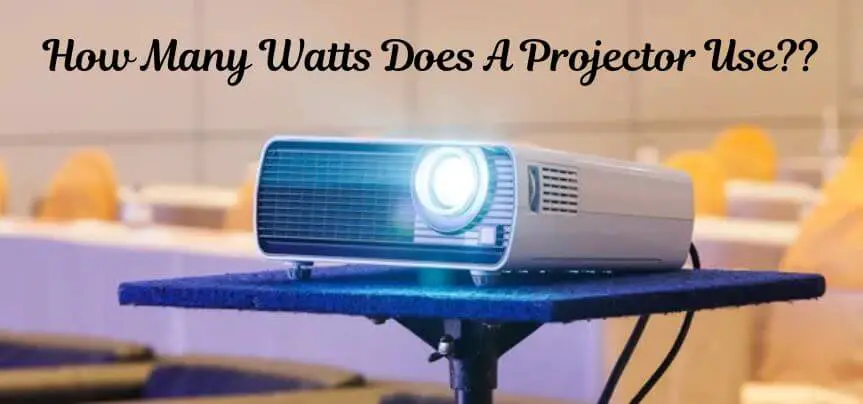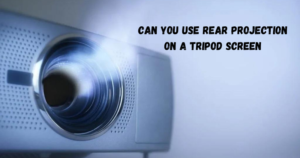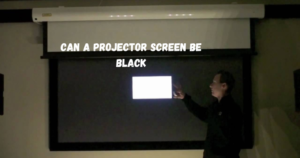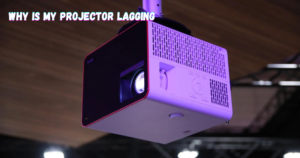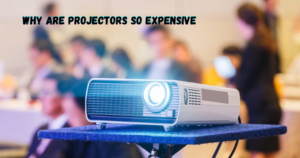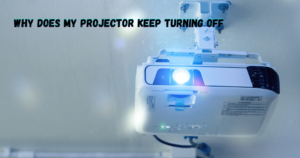Are you curious about how much power your projector uses? Knowing the wattage of a projector is essential for understanding its energy consumption, comparing different products and working out what size generator to use if battery backup is needed.
In this blog post we take a look at how many watts a projector generally consumes and important factors that can affect it.
We’ll also provide some tips on how you can save energy when operating the device. Read on to get a better insight into how many watts your projector needs.
Understanding the Basics of Projector Watts and Power Consumption
The wattage of a projector is an indication of how much power the device needs to operate. It’s usually measured in terms of volt-amperes (VA) or watts.
The most common wattage of a home theatre projector is between 100 and 300 VA, though this can vary from model to model.
One way to determine the energy consumption of a projector is to consult the manufacturer’s specifications. Most projectors will list their power intake in watts, though sometimes this might be referred to as VA.
It’s important to note that wattage can vary depending on the type and size of a projector, how many lumens it produces and the kind of lamp it uses.
Different Types of Projectors and Their Uses
Here are the five main types of projectors and their wattage:
- LCD Projector: 100 to 300 VA.
- DLP Projector: 150 to 500 VA.
- LED Projector: 60 to 80 VA.
- UHP (ultra high power) projector: 600 to 1000 VA.
- Laser Projector: 70 to 200 VA.
It’s worth noting that the wattage of projectors can vary depending on their resolution, brightness and other factors such as whether they are used in a home theater or conference room setting.
How Many Watts Does A Projector Use
There are the general wattage ranges for projectors, but the exact amount of power your projector consumes will depend on several factors.
For instance, the size and type of projector you use will affect its wattage. For example, a larger LCD projector with higher resolution will consume more power than a smaller LED one. Similarly, if you opt for a higher brightness level, then this will also increase the wattage.
The wattage of a projector can also be affected by other factors such as how long you use it for, the settings you have chosen and whether you’re using a lamp or LED light source.
Also, remember that the wattage of a projector does not necessarily indicate its energy efficiency. It is possible for an LCD projector to have a higher wattage than an LED one, but still be more energy-efficient due to its power saving technologies and features.
Tips on Saving Energy When Using Your Projector
Knowing how many watts your projector uses is just the first step in saving energy. Here are a few tips that can help you reduce your projector’s power consumption and save money on electricity bills:
- Look for a projector with lower wattage, or one that is designed to be more energy efficient.
- Opt for LED lighting sources over traditional lamps, as they consume less energy.
- Switch off features such as keystone correction and color correction when not in use.
- If possible, use a lower brightness setting or dim the screen.
- Try to limit the time the projector is used for—switching it off when not in use will significantly reduce its energy consumption.
Factors that Influence a Projector’s Power Consumption
As mentioned earlier, the wattage of a projector is determined by multiple factors. Knowing these can help you make an informed decision about which projector to choose for your needs, and how to get the most out of it without wasting energy unnecessarily.
Some of these factors include:
- Size and type of projector (LCD, LED, DLP etc)
- Resolution
- Brightness
- Lamp or LED lighting source
- Length of use
- Keystone and color correction settings.
Calculating Approximate Power Usage for Your Projector
Once you know all of the above factors, you can then calculate an approximate wattage for the projector.
For example, a 1500 lumen LCD projector with a resolution of 1024 x 768 and brightness setting of 80%, which is operated for 4 hours per day, will consume around 130 VA or watts.
This figure may differ depending on your own projector model and settings, so it’s best to consult the manufacturer’s specifications for an accurate wattage.
Tips to Reduce Your Projector’s Wattage Output
If you’re looking to reduce your projector’s wattage output, then there are a few things you can do.
For starters, make sure that features such as keystone correction and color correction are switched off when they’re not in use. This will help to reduce the power consumption of the device.
Also, try to limit the length of time that your projector is in use for. This will help to cut down on electricity costs and conserve energy.
Finally, if possible, switch to a projector that has lower wattage or one that is designed with power saving technologies.
What to Consider Before Purchasing a New Projector
When shopping for a projector, bear in mind that the wattage of the device is just one factor to consider. You should also look at other important aspects such as brightness, resolution and contrast ratio.
If you’re looking for an energy-efficient model, then opt for one with LED lighting source over traditional lamps. This will help you save power and money on electricity bills.
Finally, make sure to compare the various models in terms of wattage before making a purchase. This will ensure that you get a device that’s best suited for your needs without wasting energy unnecessarily.
FAQs
Do projectors use a lot of electricity?
No, most projectors don’t use a lot of electricity. On average, they consume between 100 and 300 VA or watts depending on the size and type of projector. However, this can vary from model to model so it’s best to consult the manufacturer’s specifications for an accurate wattage.
How can I make my projector more energy-efficient?
There are a few things you can do to make your projector more energy-efficient. First, switch off features such as keystone correction and color correction when not in use. This will help reduce the power consumption of the device. Second, try to limit the length of time that your projector is used for. This will help to cut down on electricity costs and conserve energy.
What are the benefits of using an LED projector?
LED projectors offer several advantages over traditional lamp-based projectors. They consume less energy, produce brighter images and have a longer lifespan. Additionally, they are usually more compact in size, making them ideal for use in small spaces.
Conclusion
After learning about the power consumption of projectors, it’s important to assess how this affects your overall energy costs.
Households might not think that a projector adds to their energy bill since it uses one light bulb, but the total wattage output of the device can add up in a hurry. Investing in energy efficient models is key to reducing electricity bills.
If you’re unsure what projector model to purchase or need more information about projector wattage ratings, it’s best to seek expert advice from an audiovisual technician who can offer guidance on all types of projection related needs and settings.
This will ensure you make the right decision when investing in the perfect machine for your home theatre set-up.
So if you’re looking into purchasing a projector for yourself or your family, don’t forget to consider how many watts does a projector use before making your final decision!
